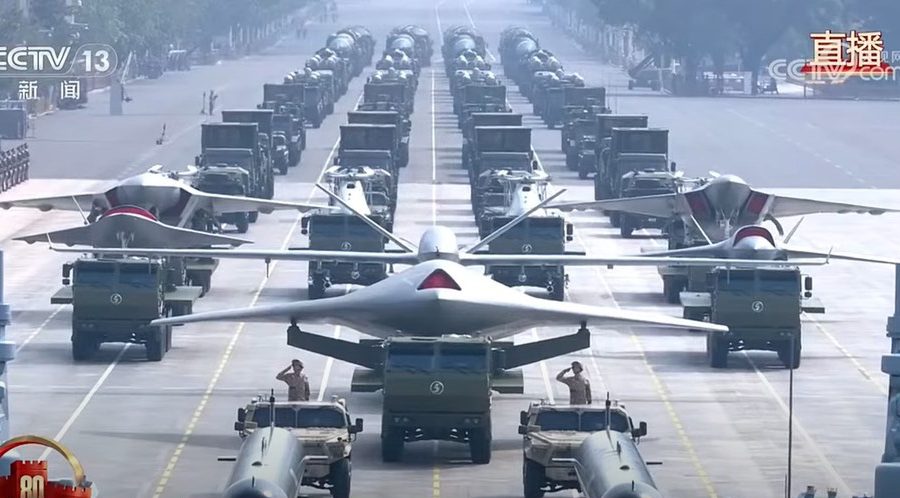NATIONAL HARBOR, Md.—While much has been said of China’s potential to invade Taiwan in the coming years, U.S. Air Force and Space Force intelligence experts say America must also be on guard for the possibility that the PRC’s ambitions might not stop in the Indo-Pacific.
“The Chinese have made no qualms about what they intend to do, from Mao to Xiaoping to Jintao and Xi Jinping: They want to be the global power,” said Brig. Gen. Brian D. Sidari, deputy chief of space operations for intelligence, listing China’s political leaders over the years at AFA’s Air, Space & Cyber Conference Sept. 22. “You can’t do that just regionally, it’s globally. Which means they’re going to be expeditionary, because they have to secure interests to fuel the [Chinese Communist Party] and the PRC. So we do have to pay attention.”
Lt. Gen. Max E. Pearson, deputy chief of staff of the Air Force for intelligence, agreed, citing China’s expanded military presence from the Arctic to Africa.
“The PRC and the PLA continue to pursue military installations, cooperative basing agreements, and partnerships in a lot of places,” Pearson said. “I mean, we’re seeing this across Asia, in the Middle East, Africa, across the Pacific. And we’re seeing PLA partnering with others: Strategic bomber patrols with Russia, naval patrols with Russia, as well as exercises [with] PLA, Russia and Iran, the fourth of which just happened.”
At least one combined bomber patrol with Russia came close enough to the U.S. last year to trigger a response from NORAD and U.S. Northern Command. The most recent trilateral exercise between China, Russia, and Iran took place this March in the Middle East.
J. Michael Dahm, a retired Navy commander and a China expert with AFA’s Mitchell Institute for Aerospace Studies, noted that the PLA has sought to demonstrate capabilities, including showing off sixth-generation aircraft and “loyal wingman”-style drones. Most recently, China shared video of its stealth J-35 and new KJ-600 airborne early warning aircraft being catapulted into the sky from an aircraft carrier for the first time.
Dahm said these developments “all seem to point to more of an expeditionary PLA.”
Pearson and Sidari declined to detail specific Chinese capabilities from the conference stage, but they did say the Air Force and Space Force need to educate their troops on them.
“We need to understand, we need to study, we need to pay attention to China in all of our theaters,” Pearson said.
The Air Force has begun to ease constraints on such education, said Chief Master Sgt. Stefan Blazier, senior enlisted leader under Pearson.
“We used to just say, ‘Hey, sorry, that’s classified, we can’t tell you about it.’ Now we’re getting classified briefs, I mean, very commonly,” he said. “It’s a standard at the Senior NCO Academy, it’s very common to see that at base development seminars. I was going to talk to a Command Chief the other day at ALS, they’re doing classified briefs on the threat, on China and on security in the Pacific.
Space Training and Readiness Command is also doing more training, said Chief Master Sgt. Ron Lerch, senior enlisted advisor to the Space Force’s top intelligence officer.
“They have baked in education about the threat and China in particular, at every echelon,” Lerch said. “So it’s not just a PME, it’s not just a session. Even for our Guardian civilians, they’re getting orientation [on the] threat, and they’re understanding sort of what the competition looks like when we talk about China specifically,”


